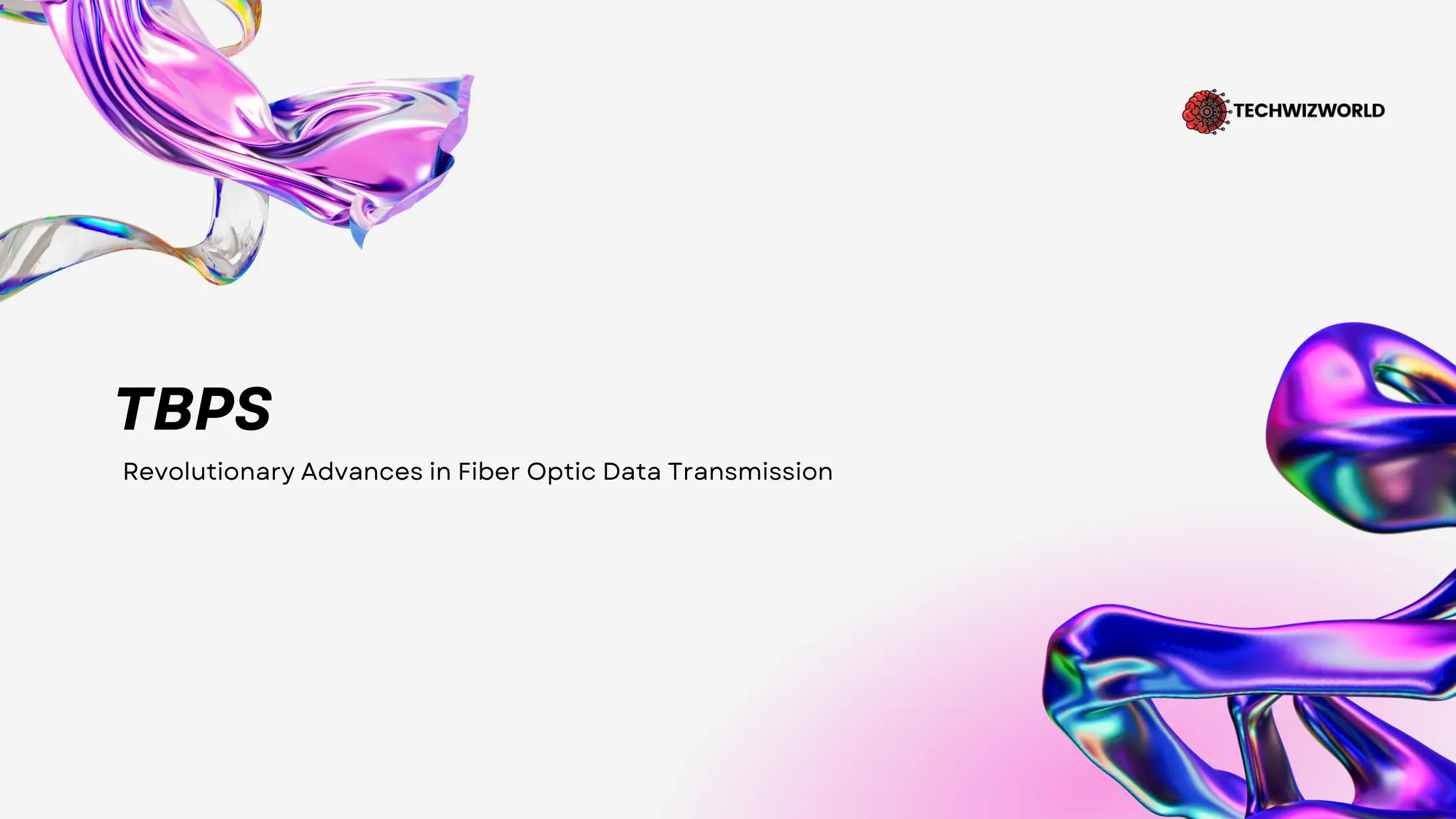In an era defined by digital communication, the speed at which data can be transmitted is crucial. Fiber optic technology, which uses light to transfer data through thin strands of glass or plastic, has become the backbone of modern communication networks. This article explores the advancements in fiber optic data transmission tbps, focusing on recent breakthroughs and their implications for the future.
Understanding Fiber Optic Technology
Fiber optic cables revolutionized data transmission by using light to carry information over long distances with minimal loss. Unlike traditional copper wires, which rely on electrical signals, fiber optics use light pulses to encode data. This method offers significant advantages in terms of speed, bandwidth, and resistance to electromagnetic interference.
At its core, a fiber optic cable consists of a core, cladding, and a protective coating. The core is the thin glass or plastic strand through which light travels. The cladding, which surrounds the core, reflects light back into the core, allowing it to travel long distances with minimal signal loss. The protective coating shields the delicate fibers from damage.
Historical Context – TBPS
The journey to achieving terabit-per-second (Tbps) data transmission speeds has been marked by several milestones. In the early 2000s, Gigabit Ethernet became a standard for high-speed data transfer, supporting speeds up to 1 Gbps. By 2010, advancements led to the development of 40 Gbps and 100 Gbps Ethernet, significantly boosting data transmission capacities.
One notable innovation was IBM’s Holy Optochip, introduced in 2012. This optical chipset could transfer data at 1 Tbps over short distances. The CMOS chip featured 48 holes that allowed access to 24 photodiode receivers and 24 vertical-cavity surface-emitting laser (VCSEL) transmitters. This breakthrough demonstrated the potential of optical technologies for achieving unprecedented data transfer speeds.
Breakthroughs in Terabit Speeds
Recent years have witnessed remarkable advancements in fiber optic data transmission, pushing the boundaries of what was once considered possible.
China’s 1.2 Tbps Transmission Network (2023)
In 2023, China announced a groundbreaking achievement: the development of a transmission network capable of transmitting data at 1.2 Tbps. This network spans 1,860 miles and connects three locations, forming a key part of China’s Future Internet Technology Infrastructure (FITI). The FITI project aims to create a high-speed, ultra-reliable internet backbone to support the country’s growing digital economy and technological advancements.
This Tbps link represents a significant leap forward in data transmission capabilities. By leveraging advanced modulation techniques and sophisticated error correction algorithms, Chinese researchers were able to achieve this remarkable speed over such a long distance. This development not only enhances China’s communication infrastructure but also sets a new benchmark for global data transmission standards.
UK Aston University’s 301 Tbps Achievement
In a similar vein, researchers at the UK’s Aston University achieved a remarkable data transmission speed of 301 Tbps over existing fiber networks. This breakthrough demonstrates the potential of current infrastructure to handle significantly higher data loads without requiring extensive upgrades.
To put this achievement into perspective, 301 Tbps is approximately 1.2 million times faster than the average fixed broadband speed in the United States, which is around 242.48 Mbps. This speed is fast enough to deliver 1,800 4K movies to your home in a single second. Such capabilities have profound implications for data centers, internet service providers (ISPs), and other large-scale operations that require massive data throughput.
Practical Implications and Real-World Applications
While the prospect of Tbps speeds is exhilarating, it is essential to understand the practical implications and real-world applications of these advancements.
For ISPs and Data Centers
For ISPs and data centers, the ability to transmit data at Tbps speeds is transformative. It allows for greater efficiency and capacity in handling the ever-increasing volume of data generated by users and applications. With the rise of cloud computing, video streaming, and large-scale data analytics, high-speed data transmission is critical to maintaining seamless and reliable services.
Large language models (LLMs), such as those used in advanced AI applications, require substantial bandwidth to process and transmit data in real-time. Tbps speeds can significantly enhance the performance and responsiveness of these models, enabling more sophisticated and efficient AI-driven services.
For Consumers
Despite these advancements, it is unlikely that individual consumers will experience Tbps speeds in their homes anytime soon. The infrastructure required to support such speeds is currently limited to large-scale operations and specialized applications. Most consumers will continue to rely on speeds measured in gigabits per second (Gbps), which are more than sufficient for everyday activities like streaming, gaming, and browsing.
The NICT’s 22.9 Petabits per Second Record
While Aston University’s achievement is impressive, it is not the fastest data transmission speed on record. The National Institute of Information and Communications Technology (NICT) holds the current world record, having achieved a staggering 22.9 petabits per second (Pbps) in their experiments. This speed is approximately 75 times faster than the Aston University team’s rate.
The NICT’s achievement highlights the ongoing advancements in fiber optic technology and the potential for even higher data transmission speeds in the future. However, it is important to note that these experimental speeds are achieved under controlled conditions and may not be immediately applicable to commercial networks.
Future Prospects
The continuous evolution of fiber optic technology promises exciting possibilities for the future. As researchers and engineers push the limits of data transmission, we can expect several key developments.
Enhanced Global Connectivity
Higher data transmission speeds will enable more robust and reliable global communication networks. This will facilitate international collaboration, remote work, and real-time data sharing on an unprecedented scale. The ability to transmit large volumes of data quickly and efficiently will also support the growth of the Internet of Things (IoT), connecting billions of devices worldwide.
Advancements in AI and Machine Learning
AI and machine learning applications stand to benefit significantly from high-speed data transmission. Faster data transfer rates will enable more complex and data-intensive algorithms to operate in real-time, leading to advancements in areas such as natural language processing, computer vision, and autonomous systems.
Expanding the Frontiers of Research
Scientific research often relies on the transfer and analysis of massive datasets. High-speed data transmission will accelerate research in fields such as genomics, climate modeling, and particle physics, allowing scientists to process and analyze data more efficiently. This, in turn, can lead to faster discoveries and innovations.
The Road Ahead
While the current advancements in fiber optic data transmission are impressive, the journey is far from over. Researchers and engineers are continuously exploring new materials, modulation techniques, and network architectures to further enhance data transfer speeds and reliability. As these technologies mature, we can anticipate a future where ultra-fast, Tbps-level data transmission becomes the norm rather than the exception.
Conclusion
The advancements in fiber optic data transmission are revolutionizing the way we communicate and process information. From China’s 1.2 Tbps network to Aston University’s 301 Tbps achievement, these breakthroughs are pushing the boundaries of what is possible. While most consumers may not experience Tbps speeds in their homes soon, the implications for ISPs, data centers, and advanced AI applications are profound. As research continues, we can look forward to a future where ultra-fast data transmission enables new possibilities and transforms industries across the globe.


Leave a Reply